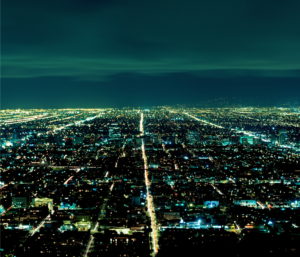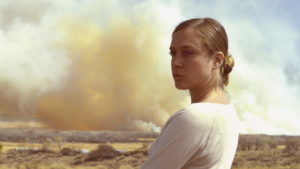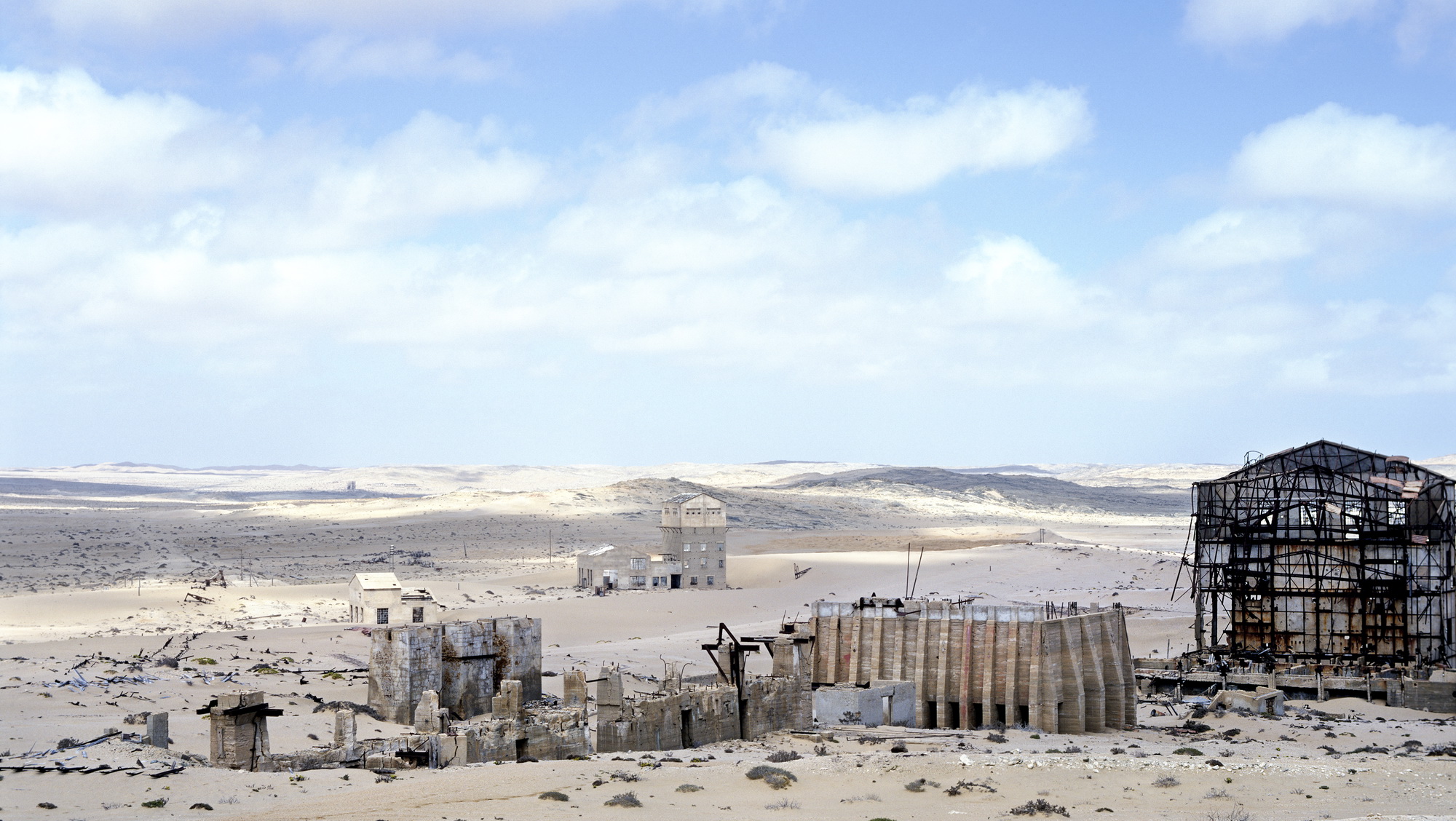Exiting Electric Earth, Doug Aitken’s immersive, multichannel narrative installation first presented in 1999 and immediately confronting Twilight (2016), an eerie, translucent ghost-like freestanding replica of a now obsolete pay phone that pulsates from light to dark depending on the number of people nearby, perfectly encapsulates the dichotomies at work in Aitken’s first retrospective exhibition. The draw is magnetic yet the meaning elusive. Aitken’s mastery is in the weaving together of video imagery and sound where his keen sense of composition and nuanced layering of architectural settings creates evocative environments. The image of a bison thrashing about in a hotel room in Migration (Empire) (2008) simultaneously projected across three billboard-size video screens, is riveting. The imagery is dazzling but also puzzling, as the filming of myriad animals in banal interior human spaces seems surreal and a physical impossibility. As does the filming of the barren natural and man-made landscapes that surround a De Beers diamond mine in the Namib Desert in Diamond Sea (1997), which Aitken has presented as both a single-channel work and a multi-screen installation.

Doug Aitken, the mirror #11 (rise), 1998, ©Doug Aitken, courtesy of The Geffen Contemporary at MOCA, Los Angeles.
The relationship between the one and the many, the individual and his/her environment and the vastness of that which surrounds the individual has been at the root of Aitken’s explorations. He is equally fascinated by construction and destruction though taking things apart is more his modus operandi than putting things together. To create Sonic Fountain II (2013/15) the concrete floors of the gallery needed to be excavated (a nod perhaps to Chris Burden’s Exposing the Foundation (1986)) creating a huge void from the extracted materials. In Sonic Fountain II the drip of water musically falls into the expansive hole filled with white liquid to create a mesmerizing cacophony of noise that echoes through the space. The relationship between the debris and the sonic elegance is left to the viewer’s interpretation.
Viewers are invited to sit on benches flanking a wooden table with a large flat-screen video monitor as its centerpiece to watch House (2010), a work in which Aitken films his parents looking at each other across a similar table in a room in a house as it is being destroyed. Walls come crumbling down, their
shelter obliterated as they sit in silence. The work hauntingly frames the remnants of the house and the couple’s deadpan expressions, oblivious to what is going on around them.

Doug Aitken, Black Mirror (still), 2011, ©Doug Aitken, courtesy of The Geffen Contemporary at MOCA, Los Angeles.
While the emotional impact of House is immediate and direct, the underlying content and meaning in many of the multichannel works is more obscure. Watching and listening to Song 1 (2012/15) and Black Mirror (2011), it is impossible not to be seduced by the apparatus. In Song 1, eight projections fill the circumference of a circular screen suspended in the center of the gallery. Images of people and places, isolated individuals and crowds, objects and buildings cycle through the 34-minute loop. The work can be entered and exited at any time and seen from the interior as well as the periphery of the screen. Similarly, in Black Mirror, the actress Chloe Sevigny is seen in infinite regress on multiple screens in a mirrored space. The fracturing and displacement created by the environment is paralleled within the narrative which relates the story of a woman constantly on the move, whose mantra, “check in, check out,” is indicative of the emptiness of her experiences.
Static works, sculptures and photographs augment the installation pieces. But even Aitken’s sculptural works—like the evocative Station to Station (volume), 2013, where striations of earth placed in vertical plexiglass Plexiglas receptacles represent the locations the train traveled in the extended performance/journey, Station to Station—present a fragmented view. The myriad mirrored wall works including END (mirror), 2014, and MORE (shattered pour), 2013, also present irregular reflections.
Aitken remarked that he wished to created a “filmset of the mind,” for his MOCA exhibition and conceived of the show as a work where the disparate pieces made a greater whole like “constellations becoming a single mass.” Aitken places his viewers in the dark and bombards them with disjointed albeit beautiful narratives. He has an uncanny way of framing everything he depicts (be it a video or still photograph) to maximize an aesthetic richness. After wandering in and out of multiple immersive video installations, the lasting impression is in the power of imagery, yet there is no denouement. His works, like life, are an additive experience of fragments, that offer no final conclusions and tend to resist interpretation.


